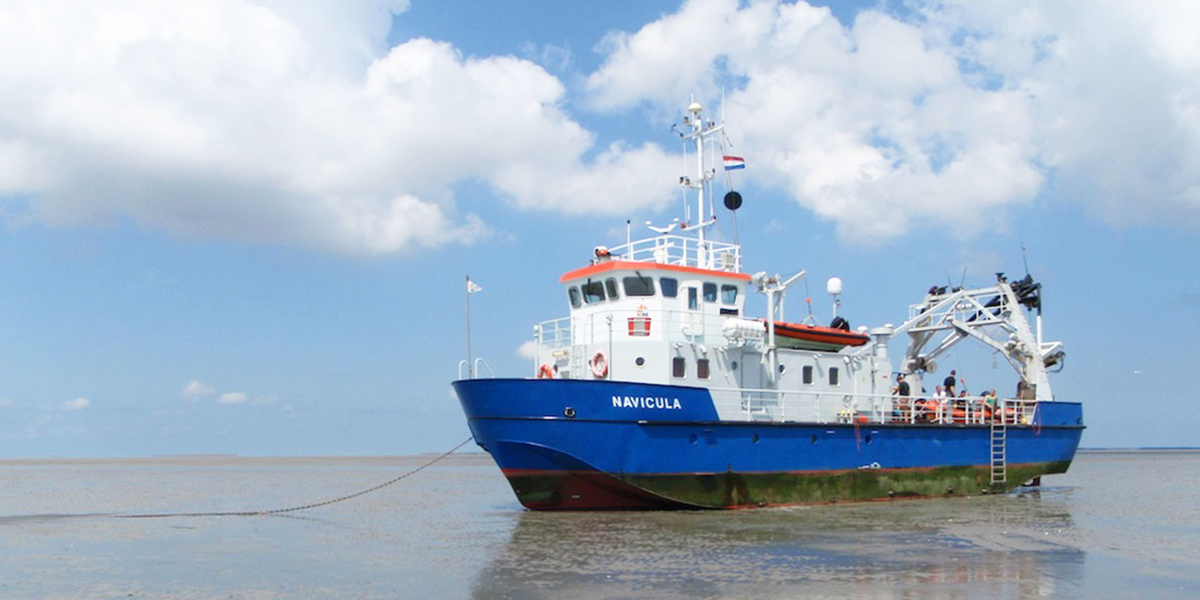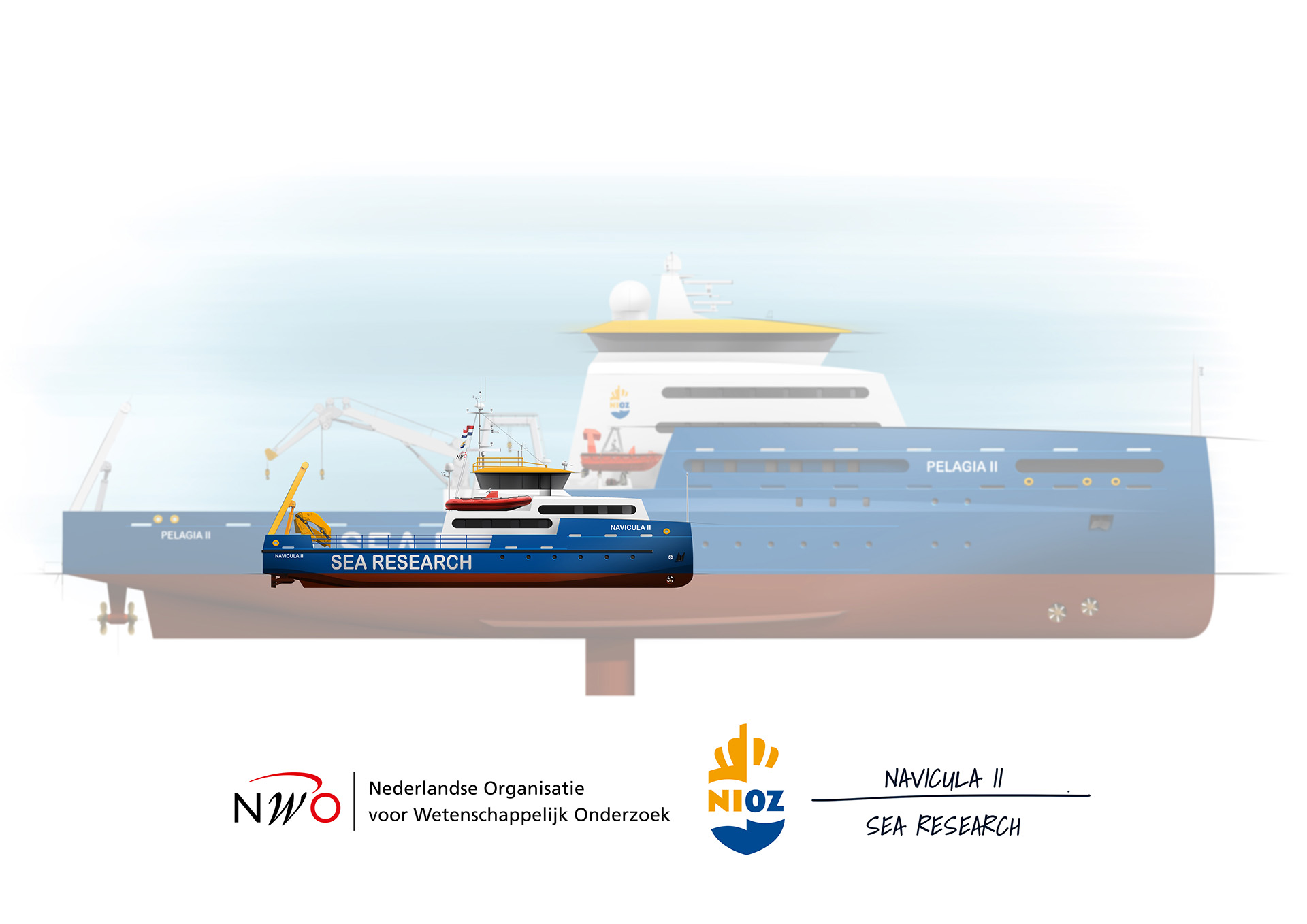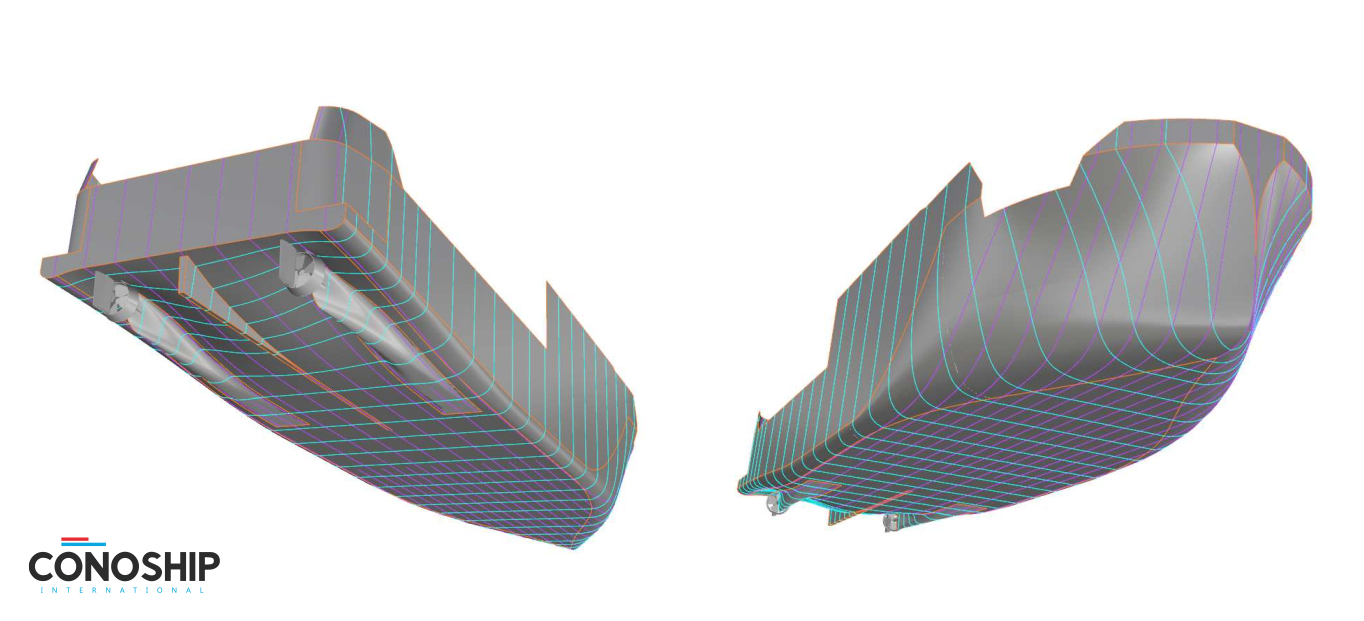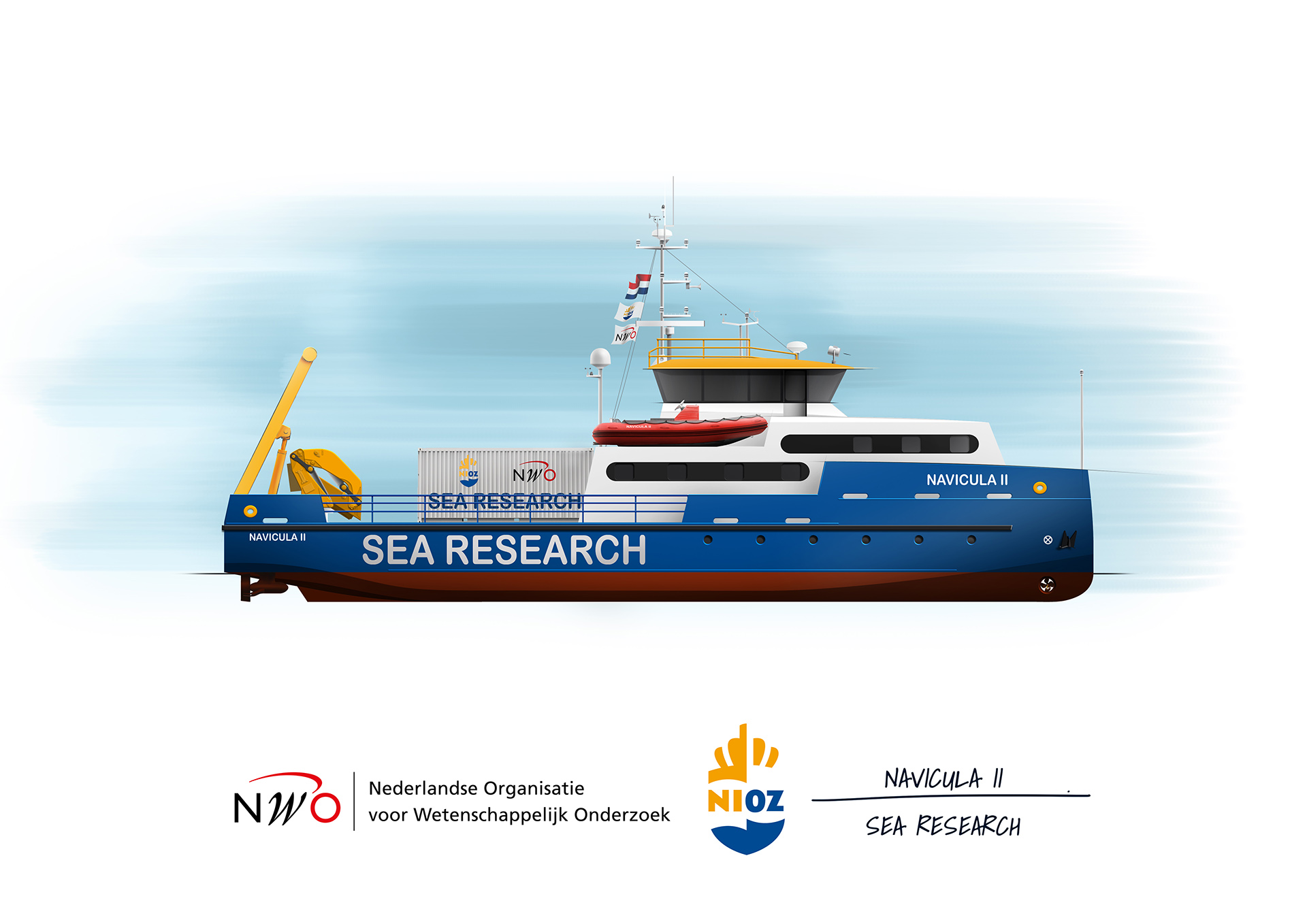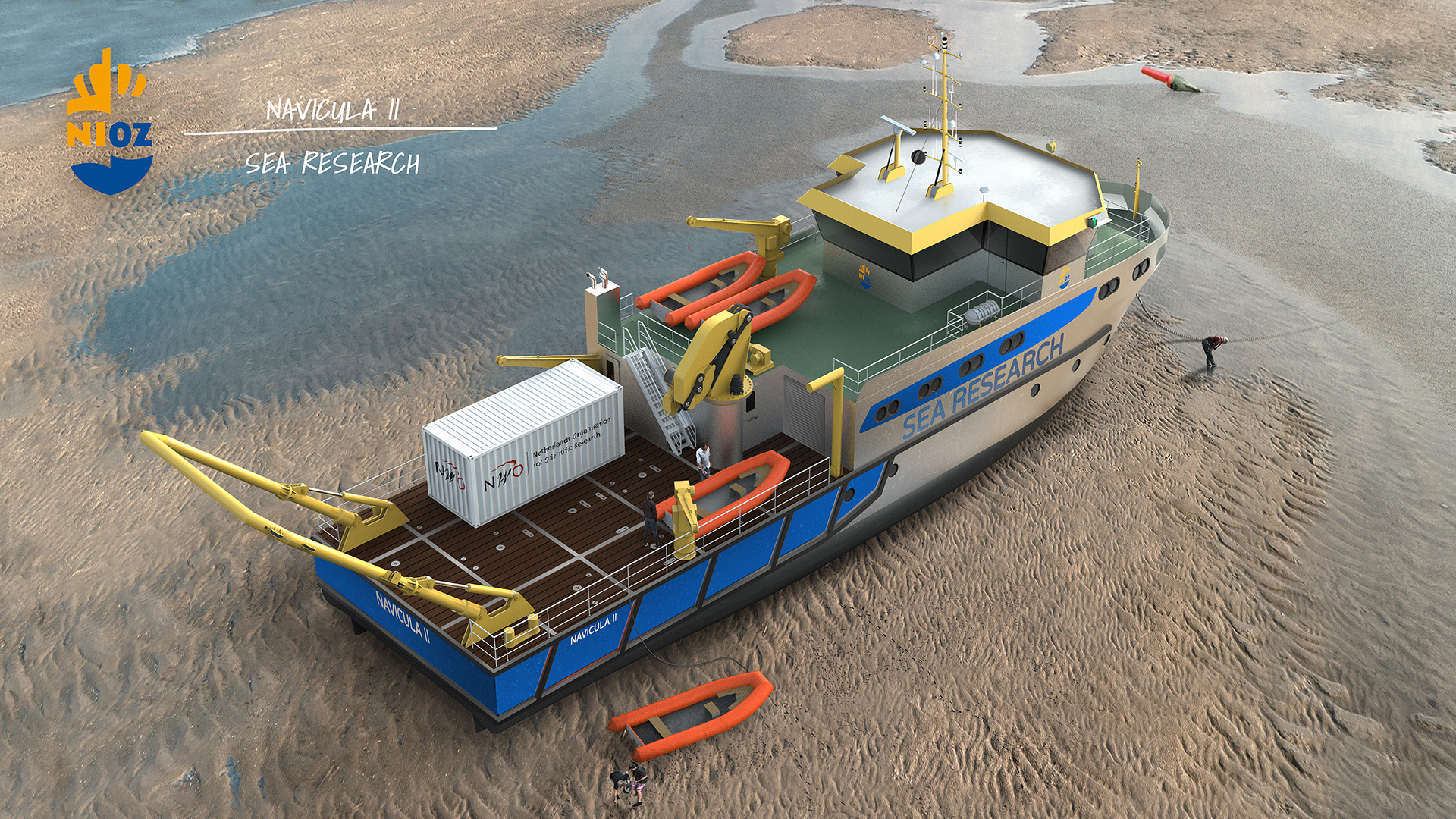Designing a new Research vessel
The current Wadden and delta research vessel RV Navicula is almost 40 years old and beyond its useful lifespan. Early 2018 we were commissioned by NIOZ | NWO-I to develop the successor. After an intensive design, research and consultancy process, the result was a concept design that excels in efficiency, speed, emission reduction, maneuverability and sea-going behavior within the set constraints.
In November 2018 we were selected for the concept design of the new research vessel. However, the ‘real’ work started long before this: the research and consultancy process before the concept design was tendered. “Early 2018 we started with some first sketches to spark discussion”, says Project Manager Harald Rügebregt, Naval Architect at Conoship International, “both for the successor of the Pelagia and the successor of the Navicula.”
This resulted in the assignment for “the preparation of a request for tender and underlying design, for a research vessel for coastal waters and Wadden (…) documents to be delivered will be made suitable for a European tender in accordance with the applicable regulations (…) the development of an efficient design, based on the specified starting points, that optimally meets the operational wishes and requirements of the parties involved.”
“Quite a mouth full, but very familiar territory for our company. It all starts with aligning wishes and expectations as given by the client,” explains Rügebregt. Through several sessions with stakeholders such as the technical department, crew and scientists, we identified the requirements, their background, how they relate to each other and whether there is a certain priority in the requirements. In addition, new user requirements were formulated. In the end, this led to a general list of requirements approved by all stakeholders. “Based on the established requirements, we developed, presented and discussed a number of very different concepts,” Rügebregt continues. “Out of these discussions followed a principle design and a direction on how to develop it further, including a choice of material.”
This design brief stated the following priorities: maximum draught and possibility to beach (identical to the current vessel), followed by a larger capacity, as efficient and green as possible, and sustainable, with minimum maintenance costs. Late 2018 the concept design-phase really started. This involves going through the regular workflow: speed, maneuvering and seakeeping studies and an outline of the propulsion concept. “In addition, much attention was given to (future) solutions to make the vessel emission free,” adds Rügebregt.
With a length of 37 metres, the RV Wim Wolff will be longer than the RV Navicula (25.5 metres), and unlike the current vessel, it will be produced from aluminum and it will be state-of-the-art, innovative and environmentally friendly. The new vessel is as green as is currently possible, with minimal emissions thanks to the use of HVO (Hydrotreated Vegetable Oil), the most sustainable form available at the moment. In addition, the noise emissions above as well as beneath the water surface are exceptionally low and there are no emissions of waste or sewage water.
“As a final step we provided the technical part of the tender documents,” Rügebregt concludes. “In practice, this mainly meant drafting the tender specifications, but in such a way that they complied with the European tendering rules and precisely described what the NIOZ wanted. The result is a spec that seems very normal but is very carefully worded.”
The vessel is named after Wadden ecologist Wim Wolff (1940-2018), who played an instrumental role in international mudflat research. Wolff’s scientific career started in 1965 at the Delta Institute in Zeeland. After that, from 1975 onwards he headed the Department of Estuarine Ecology at the Rijksinstituut voor Natuurbeheer (RIN) on Texel in the NIOZ building. There, his first mission was to compile all scientific knowledge about the Wadden Sea area. This culminated in Ecology of the Wadden Sea, which would later become the authoritative reference work about the Wadden Sea, written in collaboration with many researchers from Denmark, Germany and the Netherlands.
Green light for construction
The NWO-I Foundation Board has approved the tendering in January 2021: Thecla Bodewes Shipyards in the north of the Netherlands was chosen to construct the vessel. She will be delivered at the start of 2023 at the earliest and will then complete a series of test trips before it takes over the activities of RV Navicula in spring 2023.
Picture and video courtesy of NIOZ | NWO, artist impressions by SIGU Design


